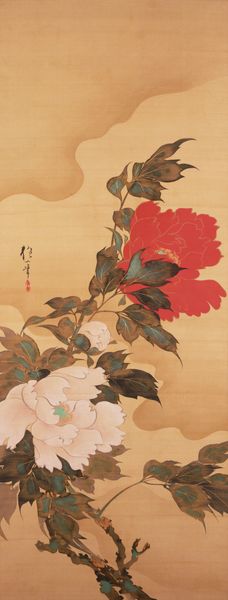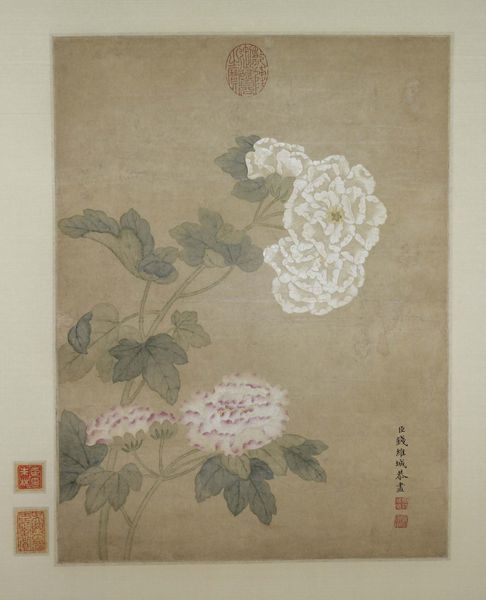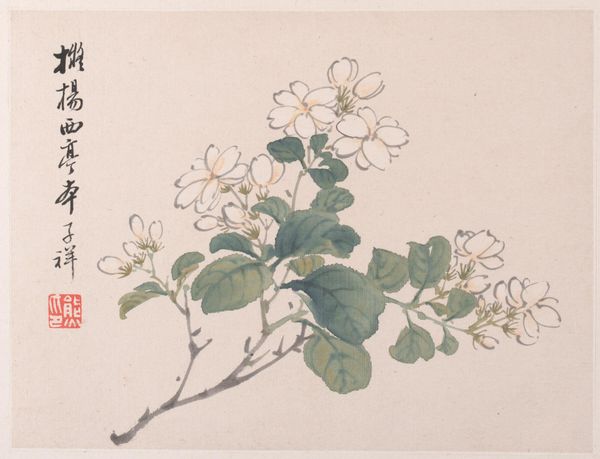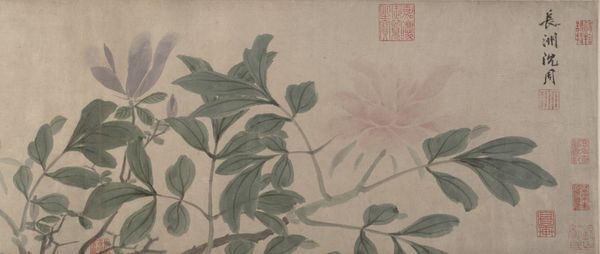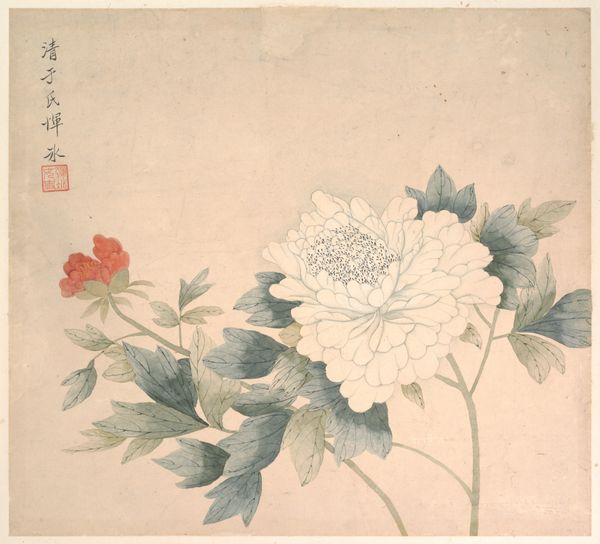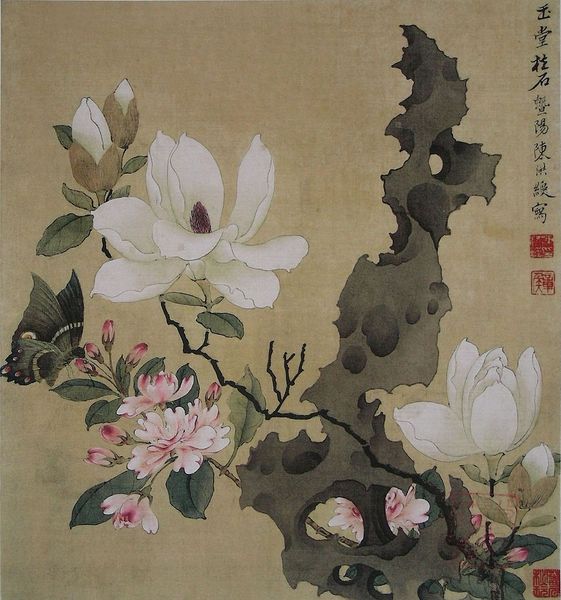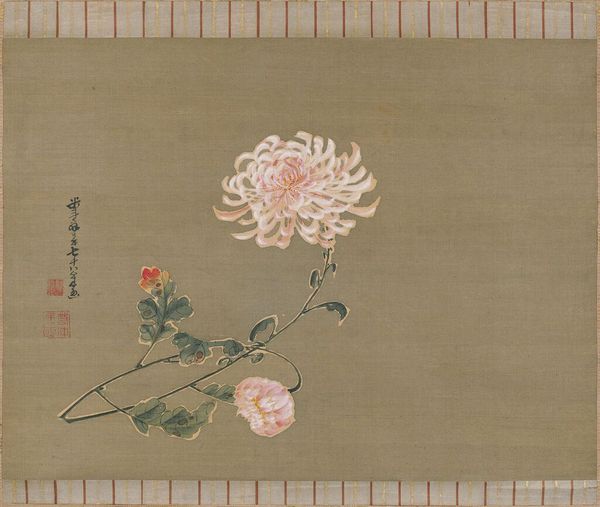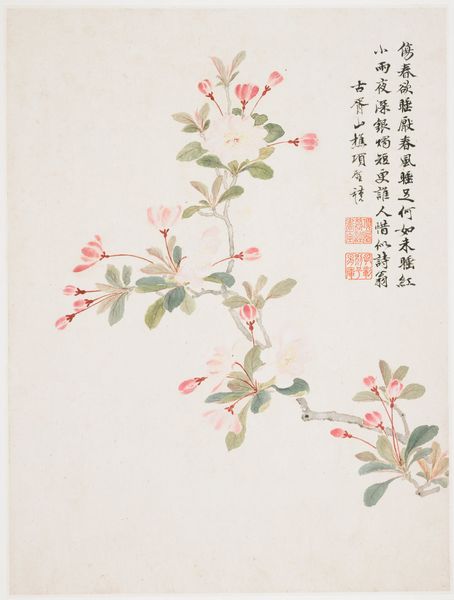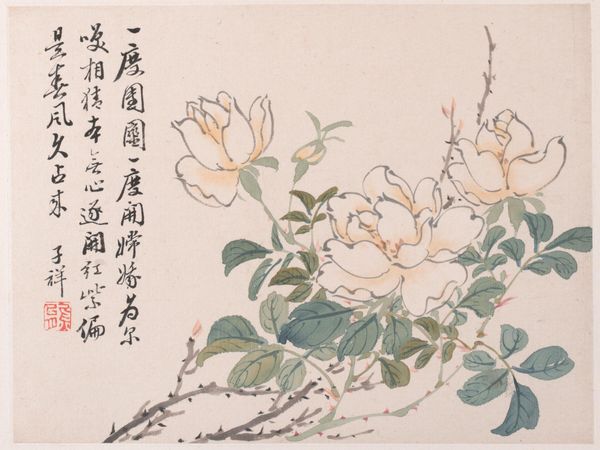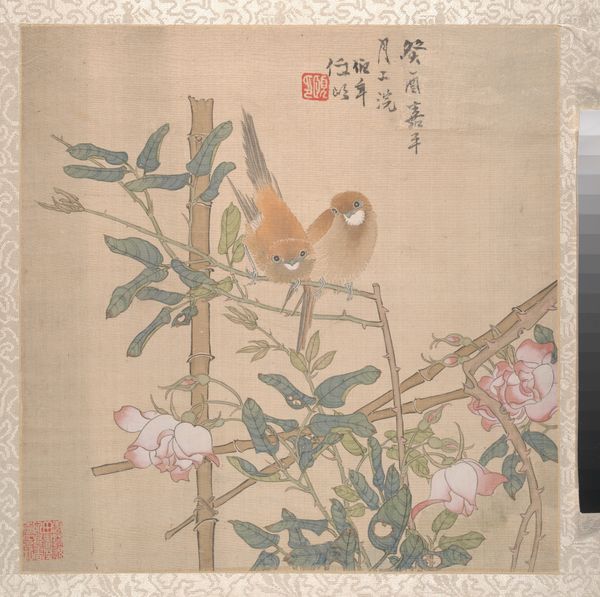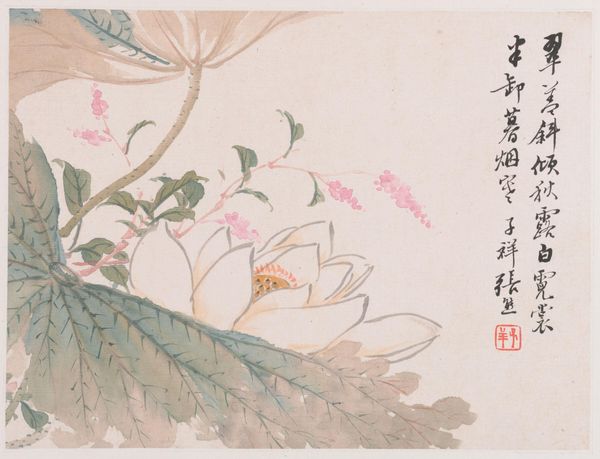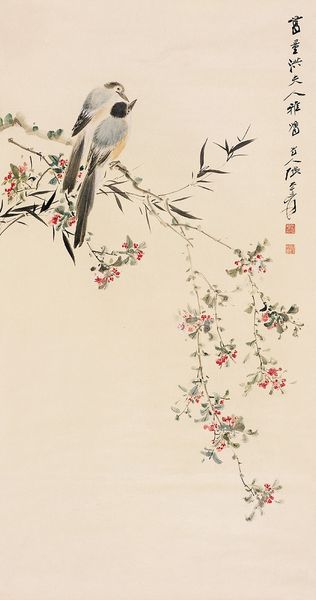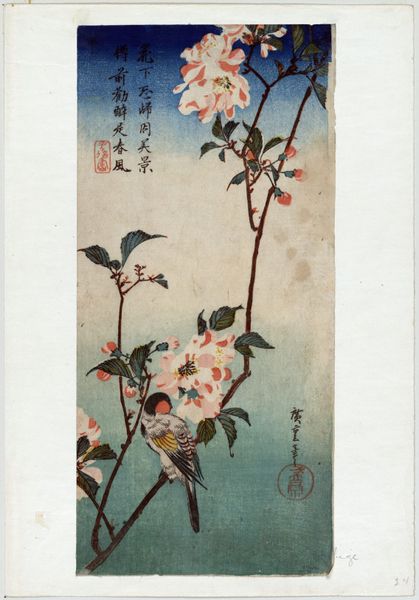
painting, ink
#
water colours
#
painting
#
asian-art
#
ukiyo-e
#
ink
#
ceramic
Dimensions: 7 9/16 × 6 1/4 in. (19.21 × 15.88 cm) (image)42 9/16 × 12 5/16 in. (108.11 × 31.27 cm) (mount, without roller)
Copyright: Public Domain
Curator: Welcome. Before us is "Camellia japonica," an ink and watercolor painting attributed to Nonoyama Kōzan, created around the 19th century. It's currently held here at the Minneapolis Institute of Art. What's your first impression? Editor: Well, it's surprisingly intimate, isn't it? I feel like I'm peering right into the heart of this flower, seeing details you wouldn't normally notice. The creamy white petals, almost translucent against the warm tan backdrop…it’s incredibly calming. Curator: That's perceptive. Camellias, especially in Ukiyo-e art, were often symbolic. While their meanings can vary, they frequently represented longevity, beauty, but also a fleeting existence due to their delicate nature and tendency to fall intact from the stem. Editor: I see that fragility. The brushstrokes are so deliberate and light, as if the artist were trying not to bruise the image itself. The veins on the leaves… each line feels considered. Almost reverent, you might say? Curator: Yes, it reflects the techniques of the era. The style is indeed delicate and representative of its influences within Japanese art circles of the time. There was a great emphasis on capturing the ephemeral beauty of nature. The minimal composition draws focus, serving as a meditation of form. Editor: And the restrained colour palette. Greens, reds and a bit of branch blue...almost no other colour but tan! That minimalism adds to the contemplative mood. Makes you want to pause and consider the nature of things, you know? As simple as the image might be... It asks questions. Curator: It is certainly thought-provoking! Paintings such as this were acquired and celebrated by Japan enthusiasts in the west who hoped to explore a part of their cultural milieu. In so doing, however, such enthusiasts might fail to understand its original historical and social place. Editor: That's a really interesting perspective... Perhaps, as viewers today, we can appreciate both its immediate, almost spiritual, impact as well as contemplate those complicated layers of art history. It is a beautiful reminder that the experience is never universal but that the discussion has real importance. Curator: Precisely. By observing art this way, it encourages greater sensitivity toward how works such as these intersect between both social worlds and intimate contemplation.
Comments
No comments
Be the first to comment and join the conversation on the ultimate creative platform.
